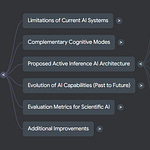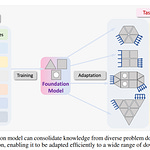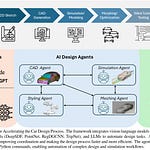I am making this post as a reference material for my AIAA talk taking place on August 14, 2025 at 5pm EST. In case you are seeing this email before the event, you are welcome to register (for free) at here. I would love to field your questions and meet some of my Substack friends at this live event.
My talk is hosted by the American Institute of Aeronautics and Astronautics, and is titled “Integrating Machine Learning in Aerospace and Mechanical applications”.
This synthetic podcast is based off the inspiring publication (link):
Borde, Haitz Sáez de Ocáriz, and Michael Bronstein. "Mathematical Foundations of Geometric Deep Learning." arXiv preprint arXiv:2508.02723 (2025).
This comprehensive publication (78 pages), "Mathematical Foundations of Geometric Deep Learning," provides a robust overview of the fundamental mathematical concepts underpinning the field. It begins by introducing Geometric Deep Learning as an area focused on neural networks for non-Euclidean data, drawing parallels to Felix Klein's Erlangen Program by emphasizing symmetries and invariances. The text systematically covers essential mathematical structures, starting with algebraic foundations like sets, maps, groups, and vector spaces, before progressing to geometric and analytical structures such as norms, metrics, and inner products. It then explores vector calculus, including derivatives, gradients, and integrals, which are crucial for optimization in deep learning, and introduces topological foundations and differential geometry, with a significant focus on manifolds and their relevance. Finally, the document introduces functional analysis and spectral theory, including eigenfunctions and Fourier analysis, followed by an in-depth explanation of graph theory, detailing graph structures, matrix representations, and the graph Laplacian.









Share this post